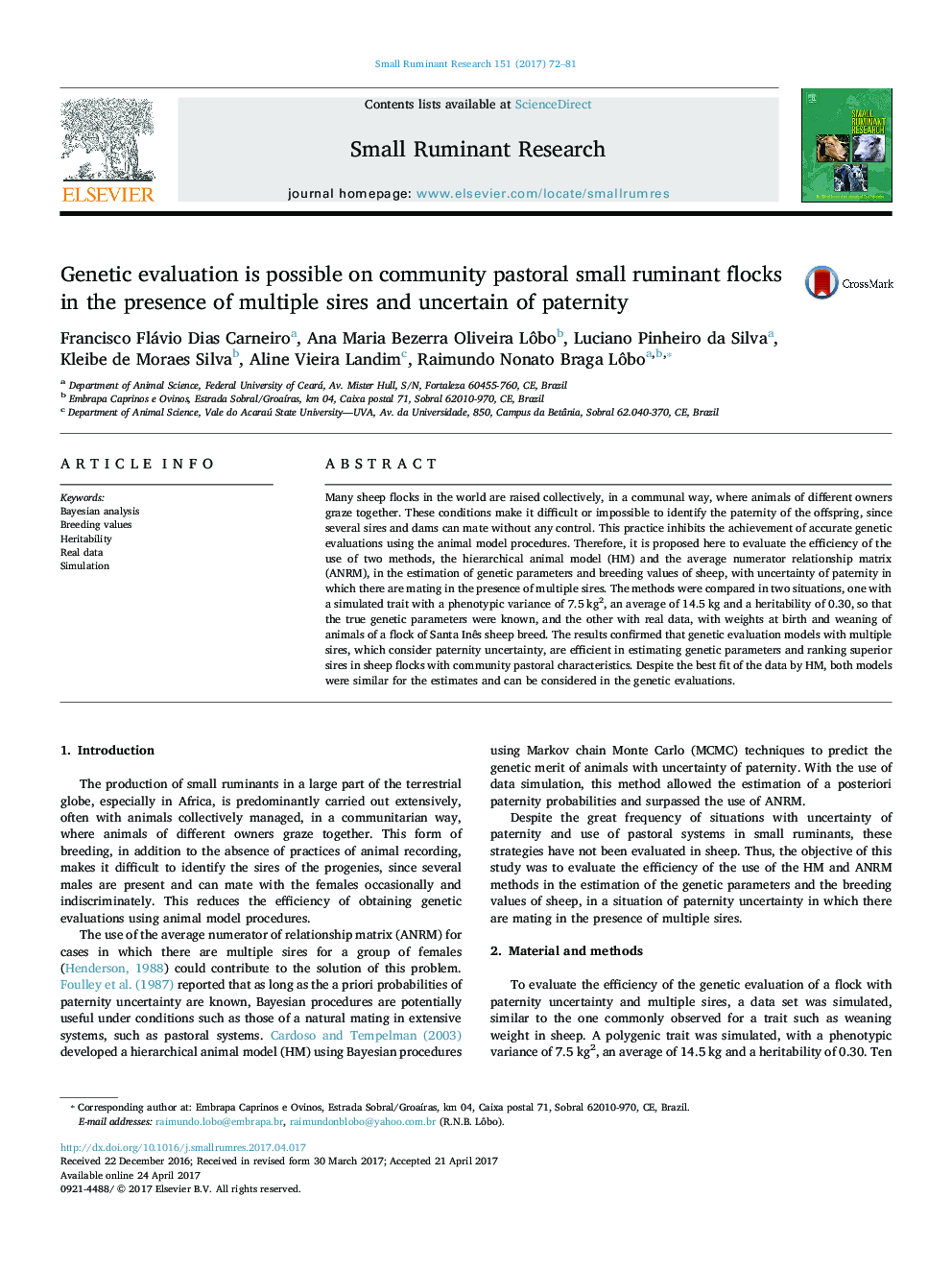| Article ID | Journal | Published Year | Pages | File Type |
|---|---|---|---|---|
| 5544187 | Small Ruminant Research | 2017 | 10 Pages |
Abstract
Many sheep flocks in the world are raised collectively, in a communal way, where animals of different owners graze together. These conditions make it difficult or impossible to identify the paternity of the offspring, since several sires and dams can mate without any control. This practice inhibits the achievement of accurate genetic evaluations using the animal model procedures. Therefore, it is proposed here to evaluate the efficiency of the use of two methods, the hierarchical animal model (HM) and the average numerator relationship matrix (ANRM), in the estimation of genetic parameters and breeding values ââof sheep, with uncertainty of paternity in which there are mating in the presence of multiple sires. The methods were compared in two situations, one with a simulated trait with a phenotypic variance of 7.5 kg2, an average of 14.5 kg and a heritability of 0.30, so that the true genetic parameters were known, and the other with real data, with weights at birth and weaning of animals of a flock of Santa Inês sheep breed. The results confirmed that genetic evaluation models with multiple sires, which consider paternity uncertainty, are efficient in estimating genetic parameters and ranking superior sires in sheep flocks with community pastoral characteristics. Despite the best fit of the data by HM, both models were similar for the estimates and can be considered in the genetic evaluations.
Related Topics
Life Sciences
Agricultural and Biological Sciences
Animal Science and Zoology
Authors
Francisco Flávio Dias Carneiro, Ana Maria Bezerra Oliveira Lôbo, Luciano Pinheiro da Silva, Kleibe de Moraes Silva, Aline Vieira Landim, Raimundo Nonato Braga Lôbo,
